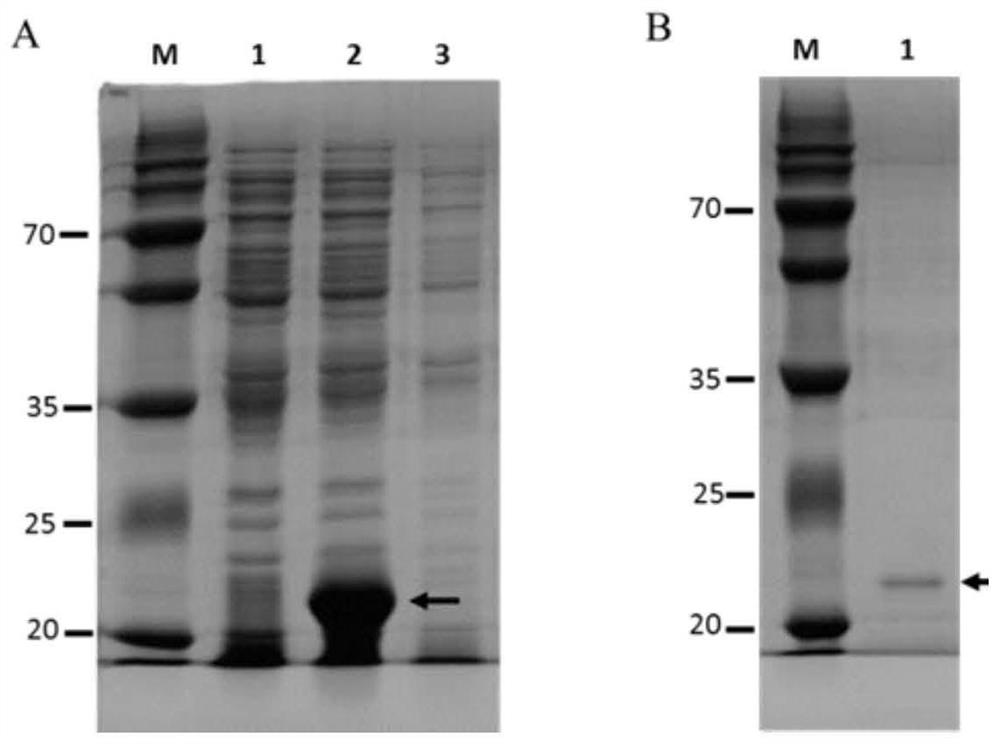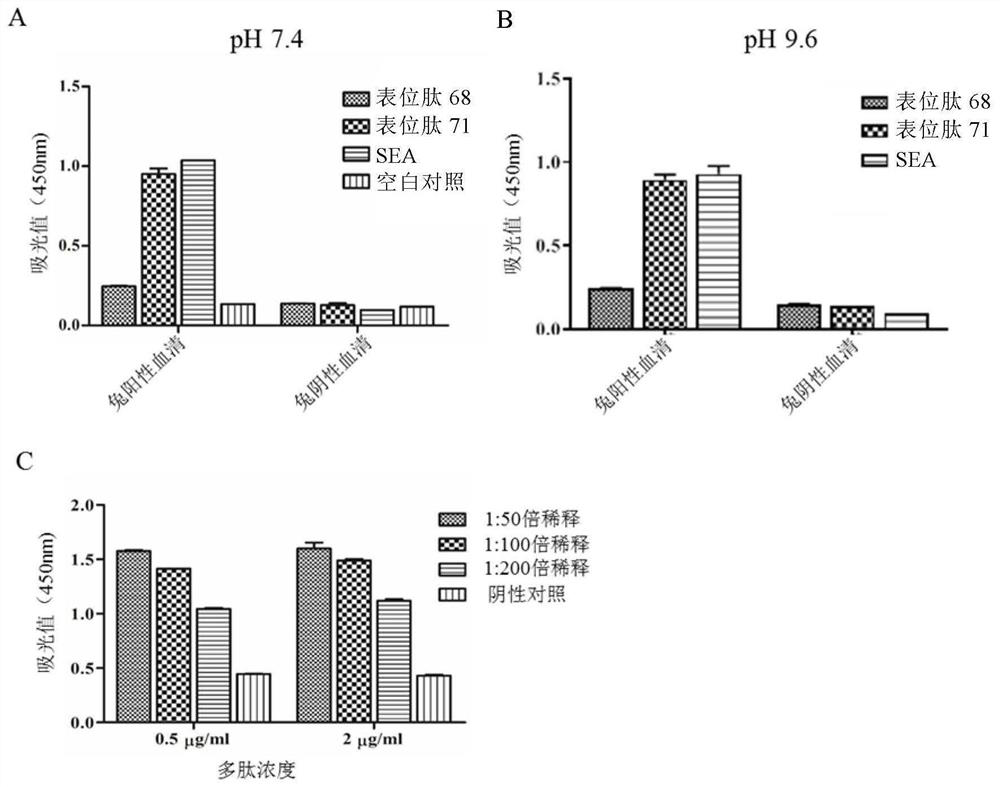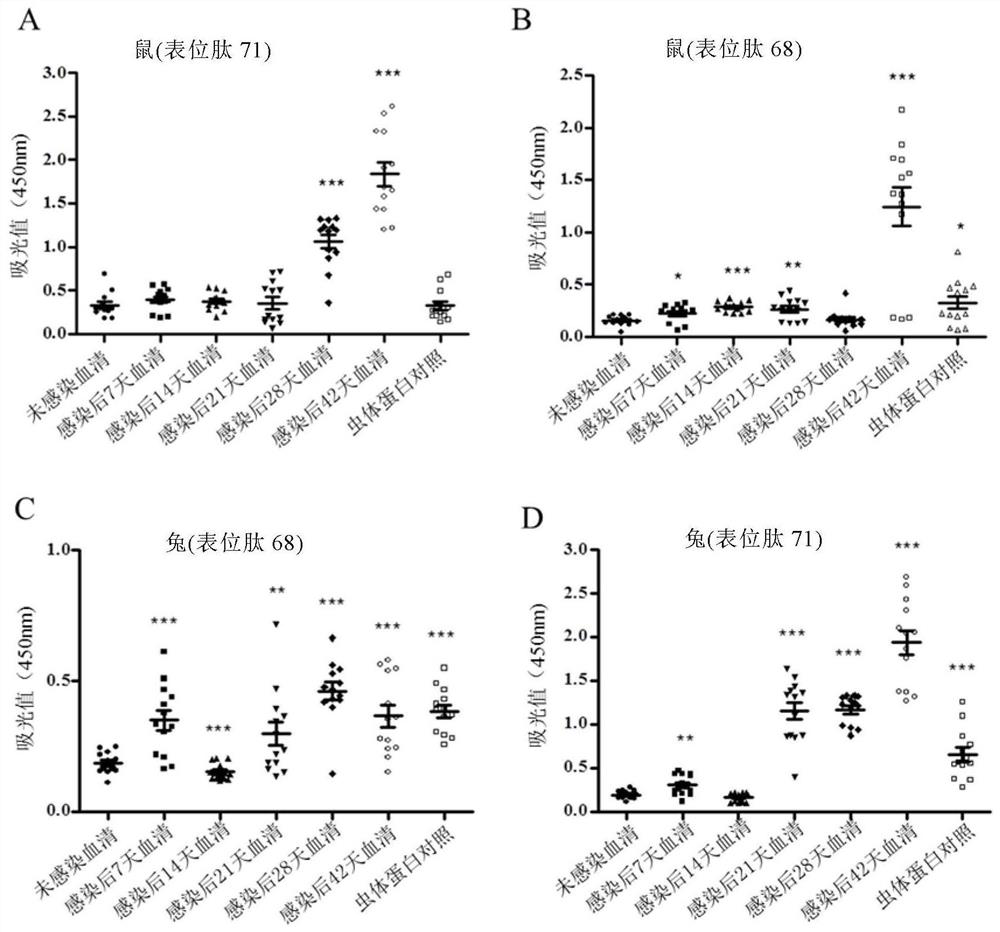A Schistosoma japonicum immune epitope recombinant protein and its application
A technology of recombinant protein and schistosomiasis, applied in the field of bioengineering, can solve the problems of lower detection cost, limited specificity and sensitivity of schistosomiasis infection detection method, and achieve good sensitivity effect
- Summary
- Abstract
- Description
- Claims
- Application Information
AI Technical Summary
Problems solved by technology
Method used
Image
Examples
Embodiment 1
[0037] Example 1 Bioinformatics analysis and epitope prediction of schistosome-specific extracellular vesicle proteins
[0038] Through mass spectrometry analysis and data query of the proteins of Schistosoma japonicum extracellular vesicles, 7 protein molecules specific to Schistosoma japonicum and with diagnostic potential were finally obtained. DNASTAR software was used to predict possible epitopes, and selected proteins with good hydrophilicity and Peptides with strong antigenicity: epitope peptide 68 (shown in SEQ ID NO.1) and epitope peptide 71 (shown in SEQ ID NO.2), chemically synthesized by Gill Biochemical (Shanghai) Co., Ltd.
Embodiment 2
[0039] Cloning, expression and purification of embodiment 2 recombinant tandem epitope peptide
[0040] The nucleic acid sequence cDNA fragment encoding the tandem epitope peptide (sequence shown in SEQ ID NO.4) was synthesized by Shanghai Jieli Biotechnology Co., Ltd., and then it and the expression vector pET32a (+) were all treated with restriction endonucleases KpnI and HindIII double enzyme digestion, the digested products were gel recovered and ligated, and then the recombinant plasmid containing the correct insertion was transformed into Escherichia coli BL21 competent cells. The screened positive recombinant bacteria were inoculated in LB ampicillin medium, when OD 600nmWhen the value is 0.6-0.8, add 1.0mMIPTG and induce expression at 37°C for 8 hours. Then, the enriched recombinant protein was purified by His·Bind Resin purification kit, and separated and identified by SDS-PAGE on 12.0% protein gel. The SDS-PAGE analysis results of the induced recombinant protein an...
Embodiment 3
[0041] Example 3 Preparation of mice and rabbit serum samples infected with Schistosoma japonicum for different days and preparation of soluble egg antigen (SEA)
[0042] Clean-grade mice and New Zealand white rabbits were infected with about 200 and 2000 cercariae of Schistosoma japonicum through abdominal skin patch, respectively. At intervals of 7 days after infection, blood was collected from the orbit of the mouse and from the vein of the ear margin of the rabbit. After collecting whole blood, let it stand at room temperature for 30 minutes, then centrifuge at 1,000-2,000×g for 20 minutes at 4°C to collect serum.
[0043] Rabbit livers infected with Schistosoma japonicum cercariae for 42 days were collected, cut into small pieces, put into a high-speed tissue masher, added an appropriate amount of phosphate buffered saline (PBS) pre-cooled at 4°C, and homogenized at high speed. Pass the homogenate through 60, 80, 120, 160 and 200 mesh screens in turn, collect the filtrat...
PUM
 Login to View More
Login to View More Abstract
Description
Claims
Application Information
 Login to View More
Login to View More - R&D
- Intellectual Property
- Life Sciences
- Materials
- Tech Scout
- Unparalleled Data Quality
- Higher Quality Content
- 60% Fewer Hallucinations
Browse by: Latest US Patents, China's latest patents, Technical Efficacy Thesaurus, Application Domain, Technology Topic, Popular Technical Reports.
© 2025 PatSnap. All rights reserved.Legal|Privacy policy|Modern Slavery Act Transparency Statement|Sitemap|About US| Contact US: help@patsnap.com



